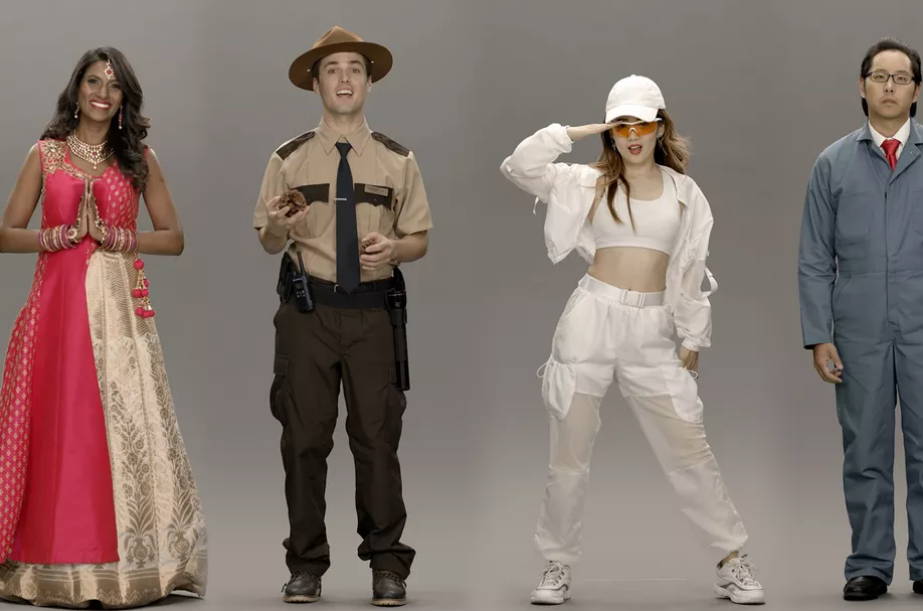In a moment where there is no proximity and touch possible as a consequence of measures like physical distancing and nationwide lockdowns, everything suddenly has to be digital. Technology has been expanding to many areas, and one consequence of the pandemic will be the acceleration of digital experiences.
Companies are realizing that the meeting could, in fact, have been an email, and there is probably no going back in many cases. Remote work will most likely increase, but aside from work a whole range of experiences are obliged to turn to digital channels to interact with their audience.
From education to clubbing, theater, and fashion week events are making use of technology to engage with people all over the world.
Shangai’s Online Fashion Week - Asia Tatler (2020)
How can we then, create digital experiences that are more connected to the physical? How can we be together while far apart? How can we express ourselves, when we are tied to the narrow possibilities of specific tools? And most importantly, how do we evolve those tools to express who we truly are?
Of the many possibilities, some emerging trends that show us an evolution of the digital world:
Digital identities:
Digital identity will evolve beyond the current formats of text, voice, and video that connect us today, as 3D avatars emerge to dress, work and play in simulated worlds.
According to WGSN [1], in 2022, lifelike digital avatars – virtual stand-ins that faithfully reproduce facial expressions, gestures, and voice – will allow people to communicate in VR as naturally as they would if they were in the same room. Freed from physical limitations, consumers will embrace multiple identities and move seamlessly between digital subcultures.
Facebook’s Codec Avatar project is working on generating digital doubles for consumers, opening the way for a deeper sense of connection and social presence in VR.
Codec Avatar - Facebook (2019)
The Future Laboratory [2] states that as brands become more entrenched in our social interactions, digital avatar ‘friends’ that are relatable rather than faceless bots will be crucial in formulating a brand personality.
Samsung’s Neon avatars, for instance, are designed to be ‘friends’ with humans, with realistic characters powered by AI.
Neon Life avatars - Samsung (2020)
“In the near future, one will be able to license or subscribe to a Neon as a service representative, financial adviser, healthcare provider or concierge.
Neons will work as tv anchors, spokespeople or movie actors, or they can simply be companions and friends showing the potential of brands to be the voice of these personal relationships.’
”
Digital retail:
AR and VR is predicted to soar to a $571.42 billion market by 2025 [3], as consumers accept these technologies as the new normal. As Covid-19 traps people in their homes, this tech is set to accelerate in a post-corona world.
Obsess is an AR and VR shopping platform that allows brands to create immersive shopping experiences that can be enjoyed in combination with physical spaces. In the wake of Covid-19 it's now inviting retailers to launch their own virtual spaces.
While it's not yet possible for shoppers to experience these virtual stores together in a digital realm, this type of social shopping experience is not so far fetched. Facebook Horizon is a new VR social platform with an interactive user journey that connects real-world peers on a third platform. While it's still in beta, it may facilitate users to virtually shop with peers in real time, despite being physically apart [4].
Obsess - Courtesy of Obsess (2019)
Digital materiality:
Materials and objects built and maintained outside of the physical world will clothe and contextualize our digital identities, through digital fashion and interiors.
This shift will see the rise of a new era of digital craftsmanship, led by artisans of the virtual world.
In May 2019, Amsterdam-based digital-only fashion house The Fabricant sold the world’s first digital couture dress for $9,500 via a blockchain, envisioning a future where fashion transcends the physical.
Iridescende Digi-Couture Dress sold for $9500 - The Fabricant (2019)
The surge of digital clothing and interior collections could appear as a more sustainable alternative and expand the possibilities of expression, considering the reduced material resources and waste, and the freedom of not having to obey the same laws that dictate the physical world.
These could be of use especially in situations where the objects are used only once and then most likely discarded, like photo shoots and events (being an even further example of how some things could actually exist only for the photograph).
Digital collaboration:
Technological products will continue to evolve the way we work together.
Spatial is an AR and VR collective computing platform transforming how workers create and collaborate remotely, using 3D avatars.
“We’re not [currently] able to transmit touch and muscle movement through the internet, but we will with the low latency capabilities of 5G,” says Mischa Dohler, a professor of wireless communications at King’s College London. His Internet of Skills project [5] predicts using 5G for seamless remote global collaboration – for example, an employee wearing a haptic suit could manipulate a robot to manufacture or inspect a product in real time, continents apart.
So not only design, which already happens remotely with teams collaborating from different areas of the world, but the manufacturing of products could include artisans and experts from different locations.
Roomone (2019)
If we could remotely transmit tactile (and multisensory) inputs through technological devices perhaps we could dream of actually grasping objects, spaces, and people, no matter where they are. It changes everything.
Virtual worlds will be a key outlet for consumer creativity and expression, and the birthplace of aesthetic trends and subcultures. They will—continue to—change and expand the way we connect and portray ourselves.
But how do we want this to move forward? What kind of phygital future would we want to create?
Now is the time to design it (instead of letting it evolve into an ugly Black Mirror episode where we didn’t have a say in), by redefining what is possible and taking advantage of technology to serve the of what it means to be human.
References:
WGSN. (2019) Future Innovations 2022.
The Future Laboratory (2020) The Transformative Twenties.
Valuates Report (2019) Augmented and Virtual Reality Market by Organization Size: Global Opportunity Analysis and Industry Forecast, 2018 - 2025.
WGSN. (2020) Social Media Commerce 2020.
Dohler, M. et al. (2017) Internet of skills, where robotics meets AI, 5G and the Tactile Internet







